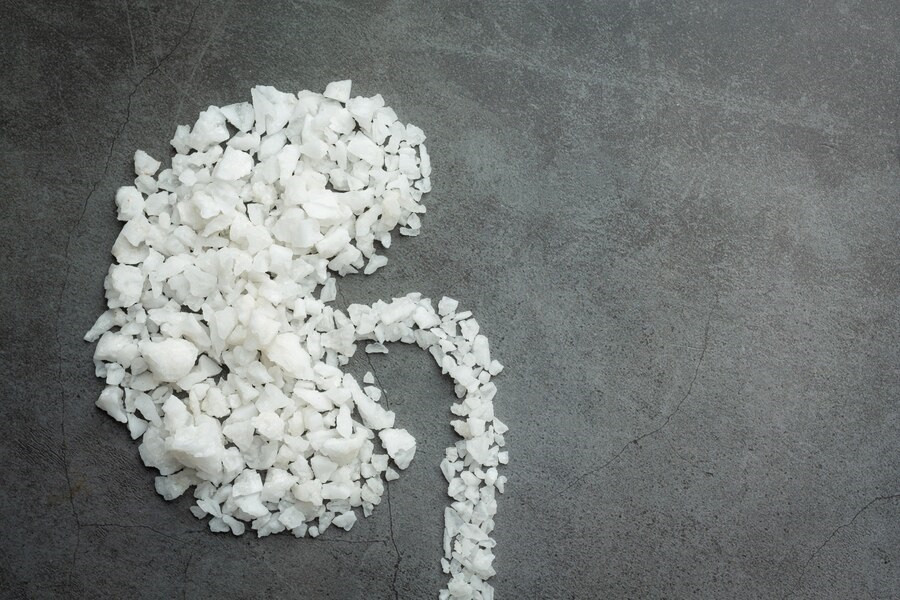People with diabetes need to be careful when selecting their daily food choices. It is generally recommended for diabetes patients to consume foods with a low glycemic index (GI), which helps prevent spikes in blood sugar levels, keeping them under control. What foods are included in the low glycemic index group? Check out the following review.
What is a low glycemic index?
The glycemic index is a classification system that ranks carbohydrate-rich foods based on their impact on blood sugar levels. It indicates how quickly a food is digested and absorbed into the bloodstream.
The glycemic index uses a scale from 1 to 100. Foods with a glycemic index of less than 55 are considered low GI, those between 56 and 69 are medium, and those above 70 are high. A higher glycemic index number means a greater impact on blood sugar levels, which means the carbohydrates in that food are broken down more quickly, causing a rapid increase in blood sugar.
For diabetes patients, consuming low-GI foods is essential to avoid significant blood sugar spikes. High blood sugar can lead to damage to blood vessels, increasing the risk of complications such as heart disease, stroke, and nerve and kidney damage.
Foods with low glycemic index
While the glycemic index is a useful parameter for determining the impact of food on blood sugar, it does not take into account other important factors such as portion size and cooking methods, which also affect blood sugar levels.
For example, even though white bread has a high glycemic index, eating it with high-fiber vegetables can help lower its impact on blood sugar Therefore, when consuming food, you also need to consider safe cooking methods for diabetes patients.
Some foods with a low glycemic index include:
- Bread: choose bread made from whole grains, multigrain, rye, or sourdough
- Cereal: steel-cut oats, which are whole grains that are split and not ground
- Fruits: apples, strawberries, apricots, peaches, plums, pears, kiwis, tomatoes, etc
- Vegetables: carrots, broccoli, cauliflower, celery, zucchini, etc
- Starchy vegetables: sweet potatoes, corn, squash
- Legumes: lentils, chickpeas, kidney beans, etc
- Pasta and noodles: pasta, soba noodles, rice vermicelli
- Rice: basmati rice, Doongara, long grain, and brown rice
- Grains: quinoa, barley, pearl couscous, buckwheat, semolina
- Dairy products and alternatives: milk, cheese, yogurt, coconut milk, soy milk, almond milk
In addition to the above foods, you can also choose foods that do not contain any carbohydrates, such as:
- Fish and seafood: salmon, tuna, shrimp
- Other animal products: beef, chicken, pork, lamb, and eggs
- Nuts: almonds, cashews, pistachios, walnuts, and macadamia nuts
- Fats and oils: olive oil, butter, and avocados
- Spices: garlic, basil, fennel, salt, and pepper
It’s important to remember that how food is prepared can also affect its glycemic index. Diabetes patients should avoid fried foods because fried foods can more easily raise blood sugar levels.
The combination of foods consumed also matters. Combine carbohydrate intake with fiber-rich foods like vegetables to slow the rate at which sugar enters the bloodstream.
If you have questions about the right food choices for diabetes, it is best to consult a doctor or nutritionist. You can also make use of the consultation features that are available in the Ai Care application by downloading the Ai Care application from the App Store or Play Store
Looking for more information about nutrition, food, and other diet tips? Click here!
- Sean Edbert Lim, MBBS
Coyle, D. (2023). A Beginner’s Guide to the Low Glycemic Diet. Available from: https://www.healthline.com/nutrition/low-glycemic-diet
Kubala, J. (2023). 5 Foods That Have a Low Glycemic Index. Available from: https://www.health.com/low-glycemic-index-foods-8363965
WebMD Editorial Contributor. (2023). What Are Low Glycemic Foods?. Available from: https://www.webmd.com/diet/what-are-low-glycemic-foods
Diabetes UK. Glycaemic Index and Diabetes. Available from: https://www.diabetes.org.uk/guide-to-diabetes/enjoy-food/carbohydrates-and-diabetes/glycaemic-index-and-diabetes











